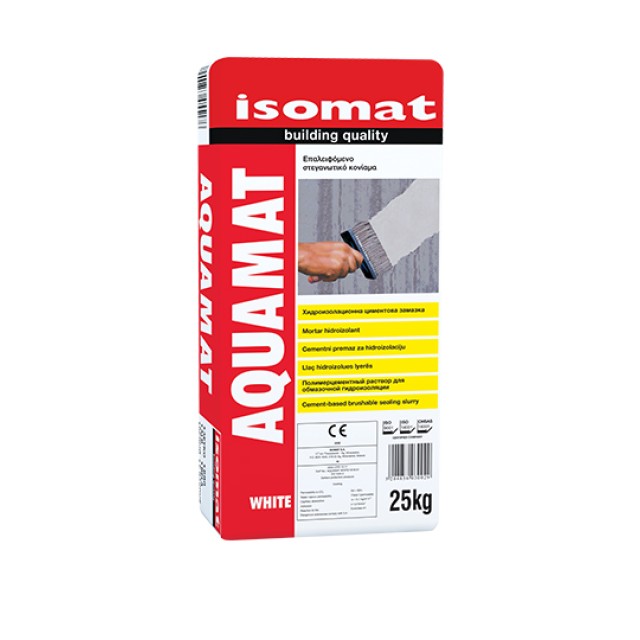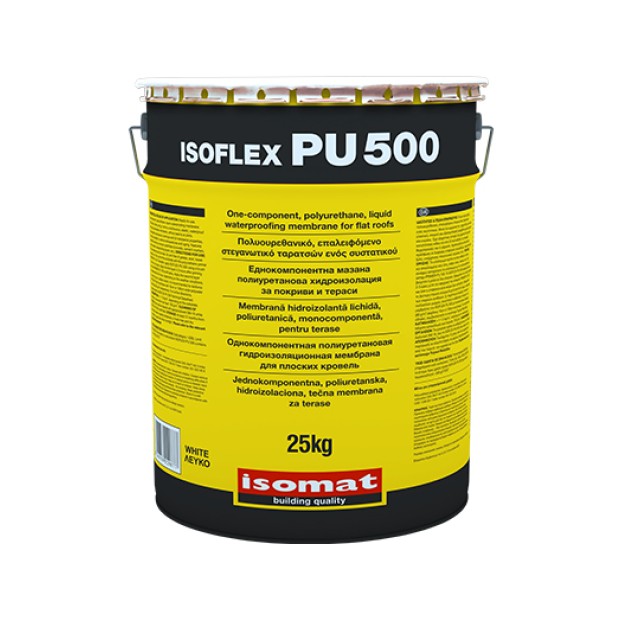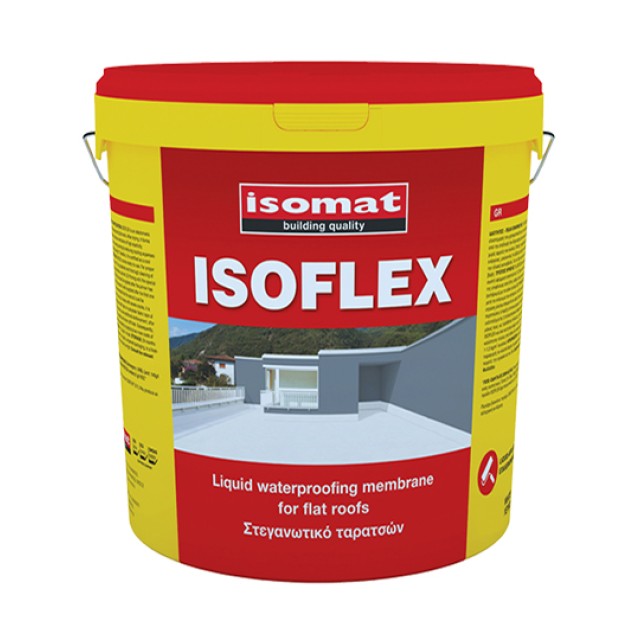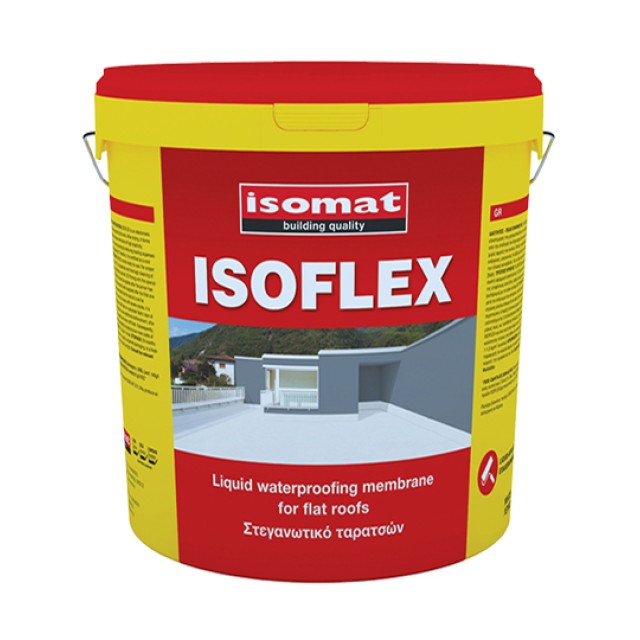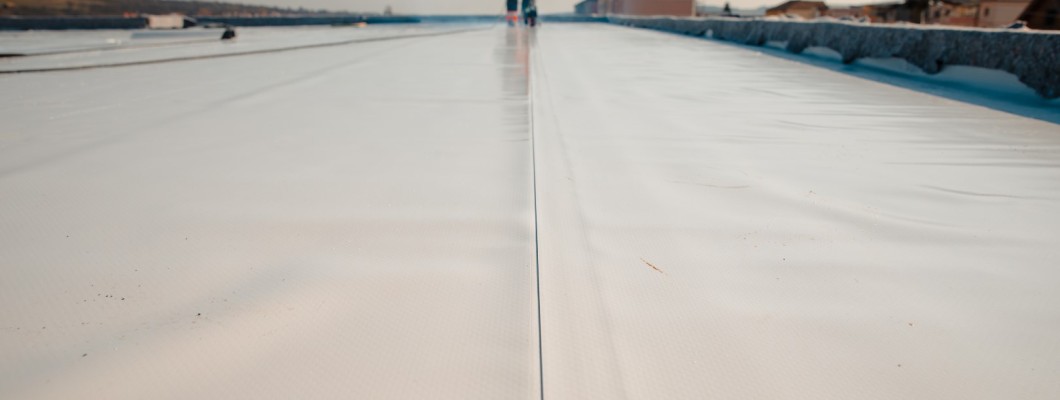
Are you facing problems with humidity and the appearance of mold? Follow the application tips of high quality waterproofing products lasting over time and get rid of this unsightly image once and for all! Read how you can seal your roof, balcony, bathroom and basement easily, quickly and efficiently, saving time and money!
ISOFLEX-PU 500 is a one-component, polyurethane, liquid waterproofing membrane for flat roofs, offering:
Excellent mechanical, chemical, thermal, UV and weather resistance properties, as it is based on pure, elastomeric, hydrophobic polyurethane resins.
A continuous, elastic, waterproof and vapor permeable membrane, without seams or joints.
Excellent bonding to various substrates like concrete, cement mortars, wood and most waterproofing layers.
Applicability even to irregular substrates.
Suitability for green roofs, flower beds, etc.
Availability in white and other colors. When a dark color of ISOFLEX-PU 500 has been chosen as an exposed layer, it is necessary to protect it with a layer of TOPCOAT-PU 720 in the same color.
End the humidity problems of your building and avoid the ex-post interventions by applying the polyurethane aliphatic roof coating ISOFLEX-PU 500.
Application Steps
1. Substrate preparation
In general, the substrate must be dry (moisture content < 4%), clean, free of grease, loose particles, dust, etc.
1.1 Concrete substrates
Any existing cavities in concrete should be filled with the appropriate repair materials in advance. Severe cracks in the substrate must be primed locally and after 2-3 hours (depending on the weather conditions) must be sealed with the polyurethane sealants FLEX PU-30 S or FLEX PU-50 S. Concrete and other porous surfaces with moisture content < 4% should be treated with the special primer PRIMER-PU 100, with a consumption of approx. 200g/m² . Surfaces with moisture content > 4% should be primed with the special two-component polyurethane primer PRIMER-PU 140, with a consumption of 150- 250g/m².
1.2 Smooth and non-absorbent substrates
Smooth and non-absorbent substrates, as well as bituminous membranes or old waterproofing layers, must be primed with the water-based epoxy primer EPOXYPRIMER 500, thinned with water up to 30% by weight. The product is applied by brush or roller in one coat. Consumption: 150-200 g/m². Depending on the weather conditions, ISOFLEX-PU 500 is applied within 24-48 hours from priming, as soon as the moisture content falls below 4%.
1.3 Metal surfaces
Metal surfaces should be:
Dry and clean.
Free of grease, loose particles, dust, etc. that might impair adhesion.
Free of rust or corrosion that might impair adhesion.
Having been prepared by brushing, rubbing, sandblasting, etc., and then thoroughly cleaned from dust, metal surfaces are primed with the EPOXYCOAT-AC anticorrosive epoxy coating in one or two layers. EPOXYCOAT-AC is applied by roller, brush or spray. The second layer follows after the first has dried, but within 24 hours. Consumption: 150-200 g/m² /layer. Application of ISOFLEX-PU 500 should follow within the next 24-48 hours.
2. Application – Consumption
Before application, it is recommended to slightly stir ISOFLEX-PU 500, until it becomes homogeneous. Excessive stirring should be avoided, in order to prevent air entrapment.
2.1 Total waterproofing of the surface
ISOFLEX-PU 500 is applied by brush or roller in two layers. The first layer is applied 2-3 hours after priming and while PRIMER-PU 100 is still tacky. The second layer should be applied crosswise after 8-24 hours, depending on the weather conditions. Consumption: approx. 1.0- 1.5kg/m², depending on substrate type.
In case of dense, multiple cracks all over the surface, it is strongly recommended to fully reinforce ISOFLEX-PU 500 membrane with 100cm wide strips of polyester fleece (60g/m² or 120g/m²), which must overlap by 5-10cm. Two-three hours after priming, the first layer of ISOFLEX-PU 500 is applied to a width of 100cm and while still fresh a strip of polyester fleece is embedded.
The same application process is followed on the remaining surface. Then, two extra layers of ISOFLEX-PU 500 are applied over the entire surface. Consumption: > 2.50kg/m², depending on substrate type.
2.2 Local waterproofing of cracks
In this case, the primer is applied on the substrate only along the cracks, to a width of 10-12cm. Two-three hours after priming, the first ISOFLEXPU 500 layer is applied and, while still fresh, a 10cm wide polyester fleece strip (60g/m² or 120g/m²) is embedded lengthwise. Two extra ISOFLEX-PU 500 layers are applied along the cracks, completely covering the reinforcement. Consumption: > 250g/m of crack length, depending on substrate type.
2.3 Waterproofing under tiles
ISOFLEX-PU 500 is applied by brush or roller in two layers. ISOFLEX-PU 500 should be locally reinforced along joints and wall-floor junctions by embedding a 10cm wide polyester fleece strip (60g/m² or 120g/m²) on its first layer, while it is still fresh.
Then, two extra ISOFLEX-PU 500 layers are applied along the cracks, completely covering the reinforcement. After applying the final layer and while this is still fresh, quartz sand (Ø 0.3-0.8mm) must be broadcast. The quartz sand must be completely dry. Consumption of quartz sand: approx. 3kg/m². After 24 hours, any loose grains should be removed with a high suction vacuum cleaner.
Tiles should be fixed with a high performance, polymer-modified tile adhesive, such as ISOMAT AK-22, ISOMAT AK-25, ISOMAT AK-ELASTIC, and ISOMAT AK-MEGARAPID.
Tools should be cleaned with SM-28 solvent, while ISOFLEX-PU 500 is still fresh.

